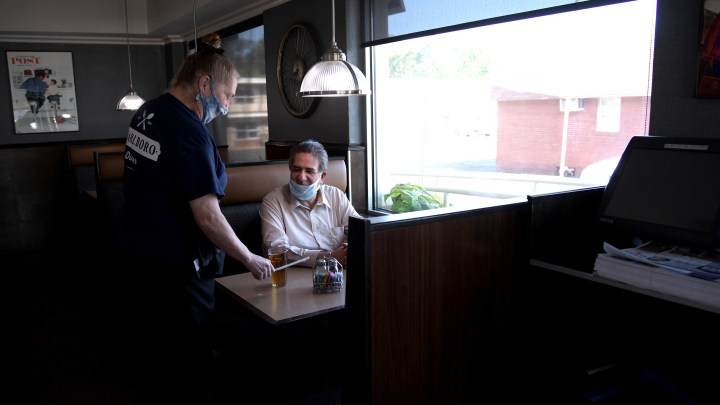
As restaurants reopen for indoor dining, HVAC systems get an upgrade
As restaurants reopen for indoor dining, HVAC systems get an upgrade

One of the scariest things about COVID-19 is that it tends to spread in the very air that we breathe. People infected with the virus breathe it out, which means people near them stand a good chance of breathing it in and becoming infected themselves.
Reducing that risk in indoor spaces can require robust heating, ventilation, and air-conditioning systems. As restaurants and other businesses in many parts of the country have been allowed to let customers return, their owners have been putting a lot of money and effort into upgrading their HVAC systems.
About a month ago, Jennifer Vitagliano’s Michelin-starred Manhattan restaurant, The Musket Room, sent out an announcement: For the first time in months, it would be open for indoor dining.
The announcement mentioned the menu’s new half roasted chicken in salsa verde on top of sourdough pan bread, an endive salad with pecorino, pistachio and currents, and an upgraded HVAC system with high efficiency filters.
“Moreso than the style of cuisine, or what’s on the menu at the moment, people want to know: ‘What precautions are the restaurants taking to ensure my safety?’” Vitagliano said.
Vitagliano said she spent a few thousand dollars improving her existing HVAC equipment with a new addition: a needlepoint bipolar ionization system.
“It basically creates positively and negatively charged ions in your air,” said Matt Justus, a senior sales engineer with Norman S. Wright Mechanical Equipment in San Francisco. “As these particles carrying the coronavirus pass through the air, the negative ions attach to the spike proteins on the coronavirus and render that particular virus [particle] ineffective.”
Justus said needlepoint bipolar ionization systems, which cost around $2,000 per dining room, have been flying off the shelves. So have other technologies, like a ceiling fan that emits ultraviolet light to neutralize the virus.
“Our industry has really gotten a boost from this emphasis on building clean, safe and healthy indoor environments,” Justus said.
The owners of restaurants, nail salons and other businesses considering equipment like this are hardly HVAC experts. That’s why they might turn to someone like Kate Turner, a facilities management consultant in New York who’s been helping restaurant owners figure out how to upgrade their systems — even whether their existing equipment can even handle an upgrade.
“If you don’t have someone with some subject matter knowledge negotiating on your behalf with vendors, it can be really easy to accidentally move into a direction that ends up costing you a lot more money,” Turner said.
The return of limited indoor dining in New York City has been a boon to Arista Air Conditioning Corp., an HVAC service contractor in New York. Owner Scott Berger said about a third of the company’s work right now is in businesses impacted by the virus, including restaurants, gyms and movie theaters.
Still, that spike hasn’t made up for the overall downturn this year. With people working from home, many office buildings have remained empty — and haven’t needed HVAC service.
“Our business is certainly off,” Berger said. “We’re down about 23% year over year.”
As a result, Berger said he’s looking to expand his client base beyond New York City.
This story has been edited to clarify the role of negative ions in neutralizing individual virus particles.
There’s a lot happening in the world. Through it all, Marketplace is here for you.
You rely on Marketplace to break down the world’s events and tell you how it affects you in a fact-based, approachable way. We rely on your financial support to keep making that possible.
Your donation today powers the independent journalism that you rely on. For just $5/month, you can help sustain Marketplace so we can keep reporting on the things that matter to you.












